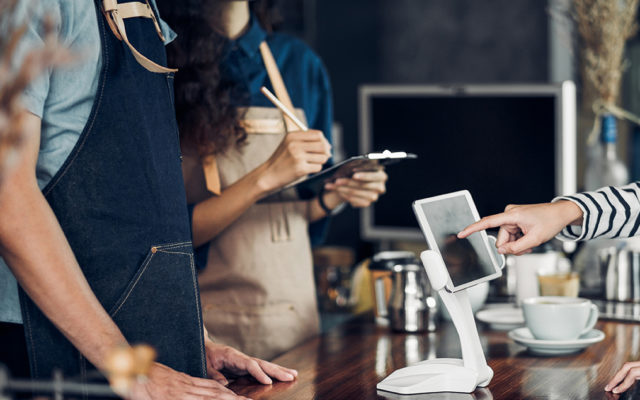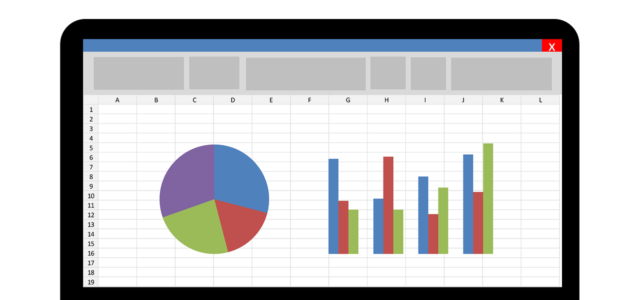The rise of online shopping makes it easy to buy things in the digital realm without setting foot in a store. Even so, there’s a growing trend of merchants putting digital elements in their physical stores.
Here, we’ll look at three of those technologies: virtual reality (VR), augmented reality (AR) and quick-response (QR) codes.
Virtual Reality makes shopping more immersive
When many people buy things, they want to envision how those products would make their lives better, or which items they need to accomplish particular goals. VR headsets help them do that.
Outdoor gear brand The North Face launched a VR campaign in 2015 featuring incredible footage from people who went on climbing trips in two scenic destinations.
Retail workers engaged shoppers by asking if they wanted to try on VR headsets during their in-store shopping trips. The brand reportedly hoped seeing the footage of those gorgeous places would inspire people to plan trips there someday. Of course, it’d be ideal if they’d shop at The North Face before departing on those adventures.
Some VR experiences also pay off for retailers by saving physical space. In one instance, a storage system brand called California Closets launched a VR showroom tool people can use while discussing their ideas with the brand’s design professionals. The tool lets them switch between different finishes and materials or see 3D examples of how their projects could look.
This approach helps people feel more confident about making purchases and moving forward with their ideas. And, it takes up less floor space in each showroom. Then, more shoppers could enjoy the space simultaneously without feeling cramped or waiting for other customers to clear out of parts of the retail space.
Some VR translates into better store layouts. Breakfast cereal brand Kellogg’s experimented with using VR to determine the best shelf positions for new products. Test subjects wore VR headsets that tracked their eye movements as they looked at things in a simulated store environment.
After the technology concluded the optimal spot for a new breakfast food was on a lower shelf, sales increased by 18%.
Augmented Reality could increase brand awareness and satisfaction
Besides checking out the potential of VR, some brands use augmented reality to help familiarize customers with their brands and offerings. One of the advantages of AR over VR is that people can get involved with AR experiences on their smartphones, thus saving companies from investing in new, potentially expensive in-store equipment. However, AR experiences still support customer traffic in stores.
One recent campaign from Dr. Pepper and 7-Eleven convenience stores celebrates football season by encouraging people to use the rear cameras on their smartphones to help a virtual player kick a football through goalposts.
This experience, which is part of 7-Eleven’s mobile app, enables people to earn up to 100 points for the brand’s loyalty program every day. They also get reminded about the ability to spend the points on Dr. Pepper-related products.
This example shows how an AR app could urge people to come into 7-Eleven stores to buy particular products. Plus, being able to earn points daily could boost repeat visits and get people into the habit of going to the convenience store chain often, thereby raising brand awareness.
It’s also common for furniture stores to have AR features in apps. After all, a person can touch the fabric of a couch, sit on the furniture and feel the location and amount of the internal padding when they visit a showroom.
But, if an in-store brand also has an AR app, a person might use it to assess how the piece would look in their home by virtually placing it in a room.
AR blends virtual and real-world elements. Sometimes, that approach minimizes waste while familiarizing a person with a product. For example, Macy’s recently expanded an AR try-on program for more than 1,000 cosmetics. It lets people see if makeup shades suit their skin tones without needing to put the products on their skin.
QR codes help brands and customers connect
QR codes are extensions of barcodes that retailers scan when people buy products. A QR code typically lets people use their smartphones to find out more about a product or a brand, and people seem to like that option. Statistics show the rate of QR codes scanned went up by more than a third in recent years.
Brands have plenty of possibilities for using QR codes. They work particularly well to verify a product’s origins. Mastercard recently announced a program for luxury clothing that combines QR codes and the blockchain distributed ledger. Consumers can scan QR codes on products to get details that aid them in verifying authenticity.
Similarly, Hershey’s created QR codes for the packages of its famous Kisses treats several years ago and included a call-to-action statement that prompted customers to “Scan to learn what’s inside.”
After doing so, people got details about things like artificial flavors and potential allergens. Such supplementary information could help people who ordinarily feel overwhelmed when reading ingredient labels that often have unfamiliar contents.
In other instances, companies created QR codes that help people take advantage of downtime. In Canada, Procter & Gamble and Walmart were two examples of companies that offered QR codes that facilitated shopping for things as individuals waited for their buses to arrive.
Even though those two brands focused on QR codes for online shopping, the efforts could mean people choose those brands more often during physical shopping trips.
QR codes also work well when people scan them to connect with customer service teams or go to an online support database. Those options reduce the frustration that could make shoppers so upset that they stop supporting the brands they used to love.
Bringing shopping into the future
Shopping is something most people can’t avoid — and many of them enjoy it. The examples described here emphasize how VR, AR and QR can collectively make buying things more fun and informative. Then, people may have more positive impressions of brands that ensure they stay happy, loyal customers.
Article by channel:
Everything you need to know about Digital Transformation
The best articles, news and events direct to your inbox
Read more articles tagged: Brand, Customer Experience, Featured, Retail







